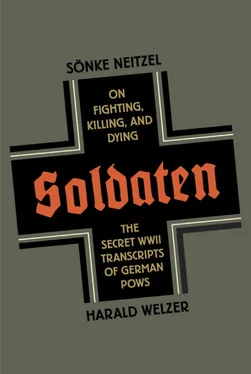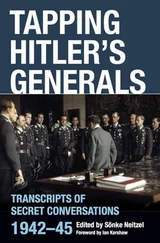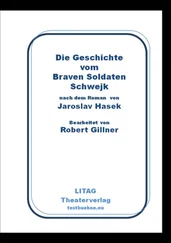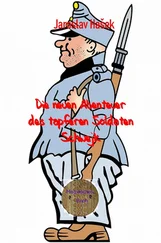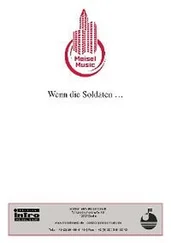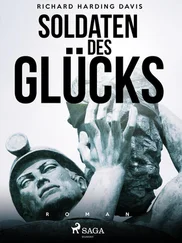This is war as witnessed from above, from the perspective of bomber crews and, in particular, fighter pilots. War looks very different from the ground, where the destruction is actually taking place, where people are running, fleeing, and dying. The German Luftwaffe also suffered significant casualties, more than 1,700 from August 1, 1940, to March 31, 1941, {106} 106 Klaus A. Maier et al., Das Deutsche Reich und der Zweite Weltkrieg, Vol. 2 (Stuttgart: Deutsche Verlag, 1979), p. 408.
but that contributed to the sporting character of airmen’s missions and their aesthetic experience of destruction.
Risk was an essential part of war, and it took particular skill and control over one’s machinery if one was to have any hope of surviving:
At HYTHE there’s an aerodrome right on the coast but there are no aircraft there. The Oberleutnant said to me one Sunday morning at ten o’clock: “Come along: we’re going to do a special job together.” We went across, each with the two 250-kilogram bombs underneath, and damn it, we ran into fog. We flew on and came out of the fog, and there was the aerodrome: and suddenly the sun came out and shone brilliantly. We saw the barrack buildings and the soldiers all sitting out on the balcony; we flew up to them, and zoom! Bang! the barracks shot into the air and the soldiers went whirling all over the place. (Laughter.) Adjoining the barracks there was a big hut, and another big house in front of it; so I thought we’d have a crack at those. Everyone was running for their lives, the hens were fluttering about, the hut caught fire—boy, did I laugh! I’ll say we gave those guys a packet. {107} 107 SRA 2600, 8 June 1942, TNA, WO 208/4126.
Another conversation explicitly focuses on the fact that air attacks were filmed—a further element in visible destruction. At the latest since the Second Gulf War, we are used to seeing targets being destroyed from the perspective of the person causing the destruction. On the nightly news, we have experienced for ourselves, in real time, how a missile strikes and obliterates a bunker. But the phenomenon began much earlier. World War II also saw, in historian Gerhard Paul’s words, “a fusion of camera and weapon.” {108} 108 Paul, Bilder des Krieges, Krieg der Bilder, p. 238.
It began when cameras were mounted on the wings of fighter planes. Later home-movie cameras were integrated into the onboard weaponry so that pilots could document their kills themselves, providing the press with spectacular images. Weekly newsreels showed pictures of targets being destroyed from the perspective of pilots and marksmen, and pictures of dive-bombing attacks proved particularly popular with the viewing public:
KOCHON: In the bombers there is an automatic camera now under the cannon and the camera turns every time a shot is fired so you get a picture of every shot.
FISCHER: I had an ordinary camera which had been specially built in.
KOCHON: The camera takes a picture when you press the button and so you know whether you scored a hit or not.
FISCHER: We have them now in the wings. We now have three cameras where the cannon used to be. Once I kept my finger on the button for two seconds and the Spitfire fell to pieces. My right wing was covered with oil from the Spitfire. {109} 109 SRA 2636, 15 June 1942, TNA, WO 208/4126.
“I can tell you I’ve killed a lot of people in ENGLAND! In FOLKESTONE we had definite orders to drop our bombs among the houses. I was called in our Staffel ‘the professional sadist.’ I went for everything, a bus on the road, a passenger train at FOLKESTONE. We had orders to drop out bombs right into the towns. I fired at every cyclist.”
Corporal Fischer, pilot of a Messerschmitt 109, May 20, 1942
{110} 110 Ibid.
The fun to be had from a successful attack played a major role in the Luftwaffe airmen’s conversations. The category not only served to mutually confirm the virtuoso skill with which one handled one’s aircraft and the superiority one enjoyed over the enemy or others. It also had a considerable communicative significance. Fun was part of what made a story worth telling. It was part of the tension of a well-rounded narrative, comprehensible and with a striking ending, and the mutual laughter it elicited showed that soldiers inhabited one and the same world, a world in which hitting targets and having fun went hand in hand. Victims in the sense of people with whom soldiers could empathize do not appear in their stories. Whether they were talking about ships, planes, or houses, bicyclists, fairground visitors, train and ship passengers, or mothers with children, the victims appear only as targets.
The following anecdotes from Germany’s air campaign against England from 1940 to 1944 require no commentary:
ESCHNER: Our KOMMODORE arranged on various occasions a day-time attack for us as a special treat—on shipping and suchlike. He intended this as a special favour for us… So we started—myself in front, and I found a ship which was outside a small harbour near LOWESTOFT—there were two ships there with only one guard ship. There was a cloud bank at 5–600m. I could see the ships from a distance of 10 km. I wanted to do a gliding attack and had already got into the gliding angle and attacked; the boat was hit; they opened fire, I opened the throttle and was off. That was great fun. {111} 111 SRA 2678, 19 June 1942, TNA, WO 208/4126.
BUDDE: I’ve taken part in two intruder patrols attacking houses.
No, only intruder patrols. Whatever we came across; country houses on a hillside made the best targets. You flew up from below, then you aimed—and crash! There was the sound of breaking windowpanes and the roof flew off. But I’ve only done that with the 190, twice in attacks on villages.
At the Market Place, there were crowds of people and speeches were being made. They ran like hares! That’s great fun! It was just before Christmas. We had no losses on that occasion. {112} 112 SRA 3774, 6 March 1943, TNA, WO 208/4129.
BAEUMER: Then in the retreat we played a fine game in the “111.” We had a 2-cm cannon built into it in front. Then we flew at low level over the streets, and when any cars came towards us we put on the searchlights and they thought another car was coming towards them. Then we turned the cannon on them. We had plenty of success like that. That was grand, we got a lot of fun out of it. We did it with railway trains, too, and that sort of thing. The nights are comparatively light in RUSSIA anyhow, if the weather doesn’t happen to be really bad. {113} 113 Ibid.
HARRER*: I take my hat off to our mines, when they go off they raze everything to the ground, they knock down 80 houses. I have had friends, who in an emergency—that is they should have dropped their mines in the sea—have dropped them on a small town, and they have seen how the houses were lifted up and fell apart in the air. The mines only have quite a thin wall, a light metal shell. And moreover they have a much better explosive than all our bombs.
When such a thing drops on a block of houses it simply vanishes, just falls to pieces. It was the greatest fun. {114} 114 SRA 3983, 6 May 1944, TNA, WO 208/4130.
V. GREIM: We once made a low-level attack near EASTBOURNE. When we got there, we saw a large mansion where they seemed to be having a ball or something; in any case we saw a lot of women in fancy-dress, and an orchestra. There were two of us doing long distance reconnaissance. […] We turned round and flew towards it. The first time we flew past, and then we approached again and machine-gunned them. It was great fun! {115} 115 SRA 828, 26 October 1940, TNA, WO 208/4120.
Читать дальше
